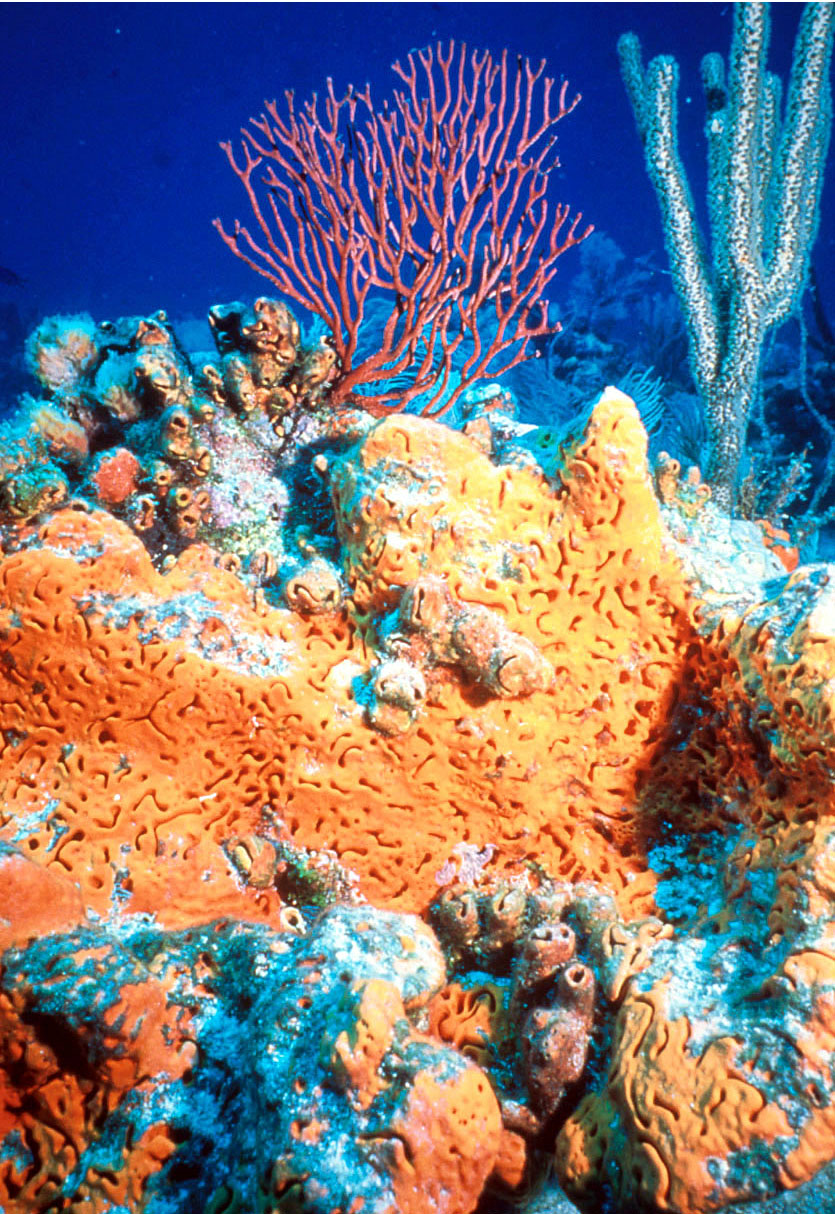|
Agelas Conifera
''Agelas conifera'', also known as the brown tube sponge, is a species of sponge. Its color is brown, tan, or greyish brown with a lighter interior. It is common in the Caribbean and Bahamas, and occasional in Florida. ''Agelas conifera'' contains bromopyrrole alkaloids, notably sceptrin and oroidin, and levels of these feeding-deterrents increase upon predation. Related species *Agelas clathrodes ''Agelas clathrodes'', also known as the orange elephant ear sponge, is a species of sea sponge. It lives on reefs in the Caribbean, usually more than below the surface of the ocean. It takes various forms, and its color is reddish orange. Desc ... References Agelasida {{Demosponge-stub ... [...More Info...] [...Related Items...] OR: [Wikipedia] [Google] [Baidu] |
Sponge
Sponges, the members of the phylum Porifera (; meaning 'pore bearer'), are a basal animal clade as a sister of the diploblasts. They are multicellular organisms that have bodies full of pores and channels allowing water to circulate through them, consisting of jelly-like mesohyl sandwiched between two thin layers of cells. Sponges have unspecialized cells that can transform into other types and that often migrate between the main cell layers and the mesohyl in the process. Sponges do not have nervous, digestive or circulatory systems. Instead, most rely on maintaining a constant water flow through their bodies to obtain food and oxygen and to remove wastes. Sponges were first to branch off the evolutionary tree from the last common ancestor of all animals, making them the sister group of all other animals. Etymology The term ''sponge'' derives from the Ancient Greek word ( 'sponge'). Overview Sponges are similar to other animals in that they are multicellular, he ... [...More Info...] [...Related Items...] OR: [Wikipedia] [Google] [Baidu] |
Sceptrin
Sceptrin is a bioactive marine isolate. It has been isolated from the marine sponge ''Agelas conifera'' and appears to have affinity for the bacterial actin equivalent MreB. As such, this compound possess antibiotic potential. See also * Ageliferin * Prokaryotic cytoskeleton The prokaryotic cytoskeleton is the collective name for all structural filaments in prokaryotes. It was once thought that prokaryotic cells did not possess cytoskeletons, but advances in visualization technology and structure determination led t ... References Imidazoles Bromoarenes Halogen-containing natural products Cyclobutanes Antibiotics Carboxamides {{Antibiotic-stub ... [...More Info...] [...Related Items...] OR: [Wikipedia] [Google] [Baidu] |
Oroidin
Oroidin is a bromopyrrole alkaloid, originally isolated from marine sponges in the genus ''Agelas.'' Its complex structure leads to wide biological activities, which makes Oroidin a potential drug candidate for various diseases. It also serves as chemical defense in marine sponges. Occurrence and properties Oroidin is a secondary metabolite extracted from marine sponges. It belongs to the pyrrole-2-aminoimidazole structural class, which is a family of marine alkaloids with many secondary metabolites in marine sponges. These compounds show unique structural complexity and exclusively studied biological activities. Oroidin was first extracted from marine sponge ''Agelas'' in 1971. Studies later found that Oroidin is present in other genera of sponges, such as '' Hymeniacidon'', ''Cymbaxinella'', ''Axinella.'' The relatively simple structure and lower molecular mass of Oroidin compared to other pyrrole-2-aminoimidazoles makes Oroidin suitable for chemical optimization. Researchers ... [...More Info...] [...Related Items...] OR: [Wikipedia] [Google] [Baidu] |
Agelas Clathrodes
''Agelas clathrodes'', also known as the orange elephant ear sponge, is a species of sea sponge. It lives on reefs in the Caribbean, usually more than below the surface of the ocean. It takes various forms, and its color is reddish orange. Description The orange elephant ear sponge is very variable in form. It may be encrusting, developing a thickness up to thick or have large, flabby lobes or be fan-, tube- or ridge-shaped. Large specimens may combine several of these forms. The surfaces are perforated by small holes, both circular and irregularly elongate, especially on the side away from the current. The flesh is tough, firm and resilient and the thick surface skin is rough to the touch. The colour can vary from yellow, through orange to brick red or brown. This sponge can be confused with ''Agelas citrina'' but that species is usually pinkish or creamy yellow. Another similar species is ''Agelas sventres'' but that has round holes on the exposed side, each with a noticea ... [...More Info...] [...Related Items...] OR: [Wikipedia] [Google] [Baidu] |

